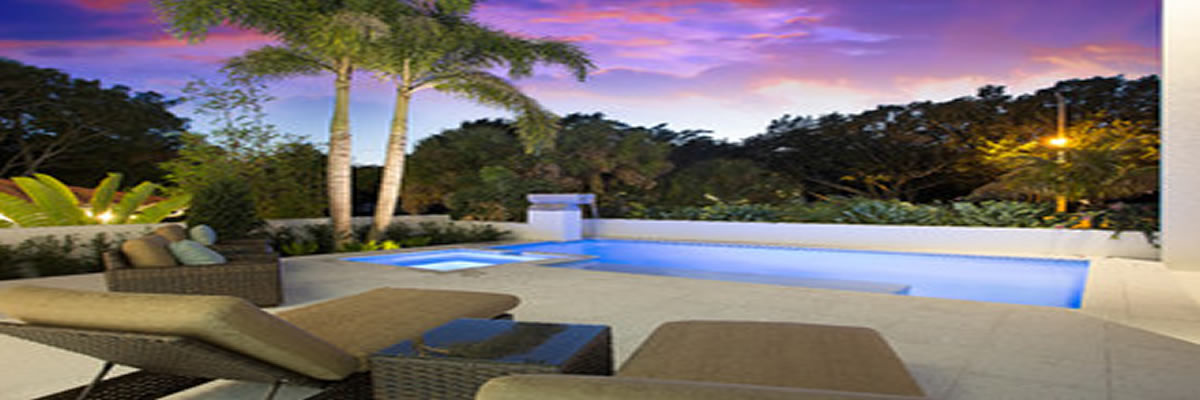FAQ
Q. How long and “when” should my pool pump run?
A. For proper water sanitation, the pump should run long enough to turn the whole body of water over 1.5 times a day. On an average pool, that would take about 8 hours. Here in S. Florida, the enemy of the pool is the hot sun. The pump should really being running during the heaviest sunlight hours. In the summer, more run time is critical. However, in the winter, the sun is a LOT weaker and the pump doesn’t have to run as long. On an average pool, about 6 hours per day is sufficient. Here is a useful connection from FP&L to see your dollar usage for run time: http://www.fpl.com/residential/energy_saving/seasonal/pool_spa.shtml
Q. Aren’t all pool companies “licensed and insured”?
A. The sad truth is, no. Most companies just say that to make you feel better assured about them. But the truth is, if they are licensed, they are required by law to post it anytime they “advertise” and that includes their marked vehicles and their website. If they don’t post a U# or a CPC#, they are not really licensed. Ethical question, if they falsely claim to be licensed and insured, what other falsities are they telling? BTW, our county license# is U-16975. Any company doing a repair in Palm Beach County is required to have a “U #”. CPC means state licensed.
Q. Is my pool leaking or is it just evaporation?
A. In South Florida, we have dry months and we have rainy months (we are a “sub-tropic” climate). What is considered “NORMAL” evaporation is 1/8” of loss per day. That is on a normal day (think hot and muggy). During our drier, cooler months, we can lose up to ¼” per day due to evaporation (depending on breezes and how “open” the pool is to the wind). The reason is that when the air is drier (less humidity), the air molecules can absorb more moisture. Especially, if the pool is unscreened with nothing to defend against the breezes. On a waterway, lake, or pond, they can create a “breezeway” for air to travel more rapidly over the surface area of the swimming pool. In the warmer months, our humidity is higher and the air molecules are less “thirsty” and less likely to take on more water. While many like to use the “bucket test”, it is tricky to use properly so I prefer just a basic measurement at the pool water level. Up to ¼”/day can just be evaporation and a bucket greatly reduces the affects of wind unless filled very high and lowered as low as possible in the pool. A flat, exposed surface will obviously evaporate more than water down in a bucket (or well). If you mark the pool and it loses a ½” or more in a 24 hour period (you need a quantifiable period of time), then you have a leak. If you have a pool/spa combination and the spa drops, but the pool does not drop, you probably do NOT have a leak, but will most likely have a check valve or suction valve problem. Because the spa overflow gets its water supply from the pool, the pool is where the loss will show (regardless of whether the leak is actually in the pool or the spa). A good rule of thumb is that if you are adding water during our rainy season, or if you are adding water more than once a week during our dry season, you probably have a leak and someone will need to detect it.
Q. How often should my filter be cleaned and/or filter element changed?
A. Normally, once a month is sufficient. But, it really depends on bather load, amount of oils present, how much debris (organic material) goes through the system. Manufacturers recommend changing the cartridges annually.
Q. Why is my pool cloudy?
A. There are two main reasons for cloudy water and they are equal possibilities. One is that the filter is not doing its job. This can be because of too short of a run time or a need to replace. The second reason is that the pool lacks chlorine. This can be because of a lot of fresh water was added or insufficient amount of stabilizer to help hold the chlorine level up.
Q. What is the “white” substance that I see on the spa wall or around the waterfall/fountain?
A. Here in S. Florida, our water is “hard”. It creates calcium rather easily. What you are seeing is the formation of calcium, sometimes called Efflorescence. Even if the tile is cleaned weekly, this can appear. There are a plethora of specialty pool tile products designed to address this special issue. It is an ongoing problem for spa/fountain spillovers.
Q. What are the advantages of having a salt water pool?
A. While both typical “chlorine” pool and a “salt water pool” have chlorine in them, the typical pool has to be dosed fairly high to guarantee that the residual chlorine will be sufficient to last at least a week. It usually spikes to around 12-13 ppm (parts per million) and then recedes during the week. A salt water pool usually stays around a constant 3ppm. Thus promoting a better feel of the water, less problems with eye irritation, less damage to bathing suits and more importantly, your skin. The skin is the largest organ of the human body and it does absorb. While some form of chlorine is necessary here in S. Florida to combat algae and illness, too much is not good either. A salt system lowers the amount because it is constantly creating and maintaining it, but at a lower level. The only other way to do that is to manually add a little chlorine daily.

